How to spend time with your baby in an interesting and useful way, introduce him to the world around him and teach him something new? We understand in detail.
The child learns constantly, every day of his life. Like a sponge, it absorbs all information from the environment.
In the first year of a baby, the main role of parents is to create such a space around him from which there is something to "absorb".

1st month
A newborn baby needs the warmth of mom and dad the most.
First, the baby sees everything blurry, then he sees at short distances, gradually his vision and hearing develop.
Therefore, in the first month, poke training and contrast cards at the child, turn on classical music, etc. there is no point, as well as demonstrating bright books.
Remember that the baby gets tired quickly, he needs a lot of sleep or just rest, freely look around.
1. Introduce him to the calm sounds: birdsong, water noise, rain, surf, lullabies.
It is important that the child hears the voices of mom and dad a lot, remembers them. Read books while your child looks at their surroundings.
2. Let's touch different materials, touch your face.3. Give a light stroking massage.
4. Hang the mobile over the bed with a calm melody, periodically change the toys in it.
4. Closer to 3-4 weeks of a child's life, introduce him to rattles, bells, contrasting pictures.

2nd month
1. Continue to develop your baby's tactile sensations by handing various pieces of fabric, from soft and fluffy to rough and rustling.
2. Speak different vowel sounds so your baby can see your articulation.
3. "Potyagushenki": a variation of the massage, which can be accompanied by rhymes and stretching movements, so that the child straightens up, stretches.4. Finger games. We say "two firemen were running" - we draw with our fingers how they run, "we pressed this button" - we press the nose - "ding-ding"
5. "We flew and flew". We raise our hands up, relax our hands and wave them, depicting flying birds.
We say: "Guli-ghouls flew, flew, flew, flew... sat on the tummy "- put our palms on the baby's belly.
We repeat "flew, flew, flew... sat on the spout "- we stroke the spout, this can be repeated for each part of the baby's body, usually children really like the effect of surprise, where the guli-ghouls will" sit ".
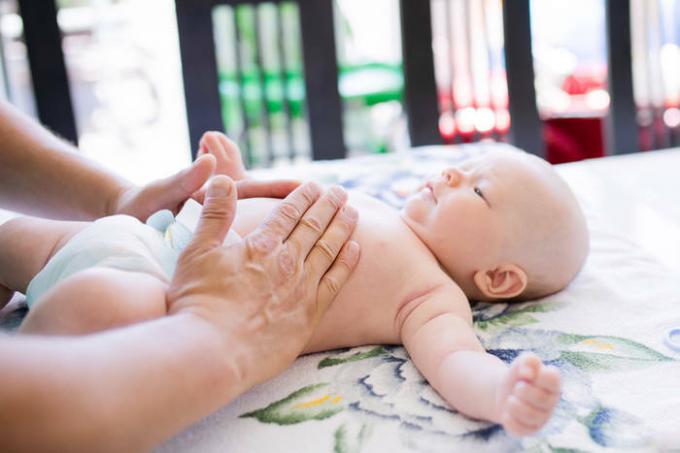
3rd month
1. It's time for "cuckoo". It happens that kids get scared if their mother hides behind some object, even just with her palms. Then the game can be modified.
When the baby is lying on his back, take his legs with your hands, close your eyes with his feet - and look out from there with a "peek".
Kids are usually delighted with such involvement in the game process and additional contact with their mother.
2. Introduce your baby to small rag or cardboard books that he can hold in his pens.
Pictures in them should be as simple as possible: one page - one image.
Voice what is drawn. If there are animals, tell your baby what sounds they make.
3. Getting to know your home: Let your child play with safe everyday objects.
For example, a small bamboo spoon, a thick plastic cup, a wooden spatula. Games should only be played under adult supervision.
4. Introduce your child to colors and shapes. It is important that the items are not small.Large cubes, beads, tactile balls, rustling materials, leaves from a tree - all this will be very interesting to him.
5. "Magpie-crow". We take a child's palm in our hand, we run our finger along it in circles: "The magpie-crow cooked porridge, fed the children to it (we bend our fingers in turn, from the little finger to the forefinger), I gave it to this, but I didn’t give this one (we lightly tap on the thumb baby). He didn’t go to the forest, he didn’t chop wood, didn’t carry water, he won’t have any porridge. ”
6. Birdie-bird. As in the "Magpie-crow" we run circles on the palm with our finger: "Bird, bird, here's some water, here's the crumbs on my palm" (pinch the palm).

4th month
1. We make the kid a "goat" with our fingers: "There is a horned goat following the little guys, top-top legs, clap-clap eyes. Who doesn't eat porridge? Who doesn't drink milk? Gore, gore, gore! "(Tickling the kid).
2. Okay. We take the baby's hands, clap the rhyme to the beat: "Okay, okay, where were you? By Grandma! What did you eat? Koshka! What did you drink? Mint! Drank, ate, shi-i-i! We flew, sat on the head "(we put his hands on the baby's head).
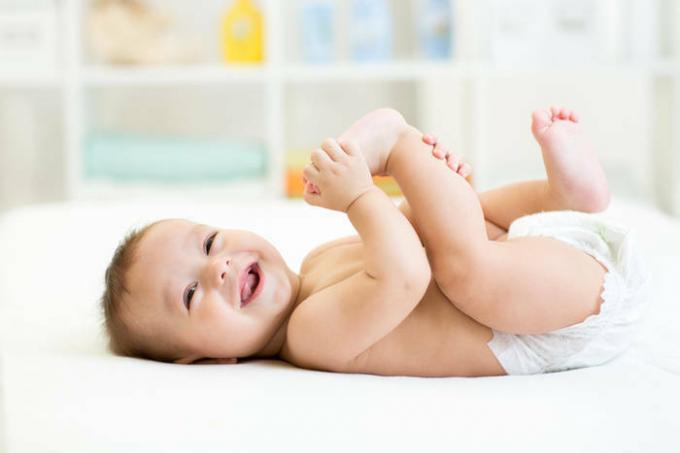
5th month
1. We connect games with light. We take a small flashlight that fits in the baby's hand, turn it on at dusk, show how the light moves.
Be prepared that most of the child will be shining in his eyes, but this is also part of his learning and development.
2. You can buy a small children's projector: to the music, it scrolls the picture in a circle, projecting them onto some surface.This toy is perfect as a night light for years to come.
3. We buy a small and strong balloon, tie it to a support near the baby so that he can reach it.
Do not fully inflate the balloon because your baby will squeeze it in his hand.
4. We show how the paper breaks. All children will tear something sooner or later. Usually books.
It will be better if this instinct of destruction is directed to ordinary small sheets of paper, better newsprint, so that the baby does not cut himself.
You can show how the paper is wrinkled, how it rustles, fold an airplane out of it and launch, etc.
5. Beads on a tight rope. Better to make them yourself, the beads should be large, strung on a very tight rope.
Take beads of different colors, shapes, materials. Kids can study such a toy for a long time both in a crib or stroller, and in a sling on their mother.As an option - beads from a variety of buttons.
6. Sensory pouches. Take several inflatable shirikov: pour rice into one, peas into the other, and small pasta into the third.
Tie the balls well and let the baby feel them properly. The presence of adults is important - in case the balls break.
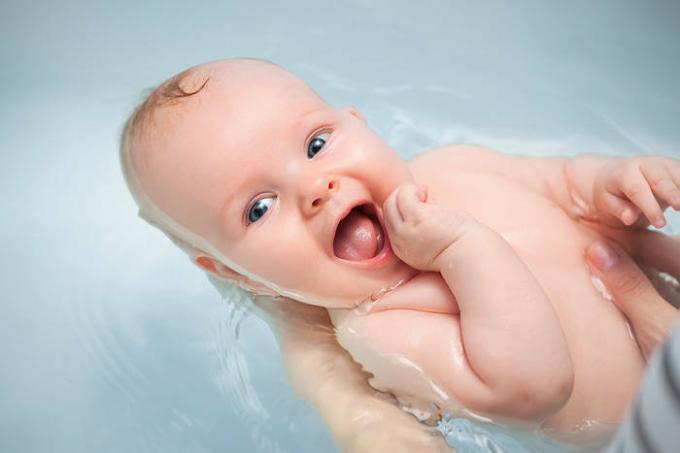
6th month
1. Learning gestures. Regularly show your child how to wave "hi-hi" and "bye-bye", throw up your hands in surprise, shrug your shoulders, squeeze your palm "give-give", wave your head "yes" and "no".
2. Pyramids and turrets. They can be folded as ready-made purchased ones, or built from improvised jars and boxes.
3. Drum. You will need plastic and wooden spoons, as well as boxes, dishes and other containers on which the child can drum heartily.

7th month
1. Simple joint games with your child: you put the balls in a bowl, the child puts them out, and vice versa.
You can also put on and take off the elements of the pyramid, elements of the game-insert.
2. Hide and seek with toys. Cover the toy with a cloth so that it looks out a little (otherwise the baby won't look) and ask where it is.
So the child learns to understand that a thing does not disappear if it hides behind another object.3. Place a small toy in your palm, show it to the baby, then make a fist.
Allow your toddler to gradually open his palm by lifting your fingers. When he manages to find a toy, clap your hands cheerfully.
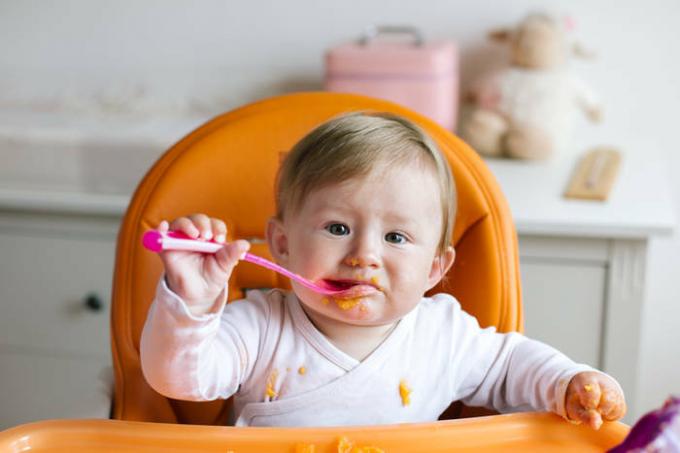
8th month
1. Show your child how to play with a toy on their own: press a button, turn it on and off.
Offer to repeat, help if at first it does not quite work out.
2. Give your baby a small bag filled with items that are safe for him, but not toys.
Let him lay them out and hide them back. So the kid will feel involved in the world of adult things.
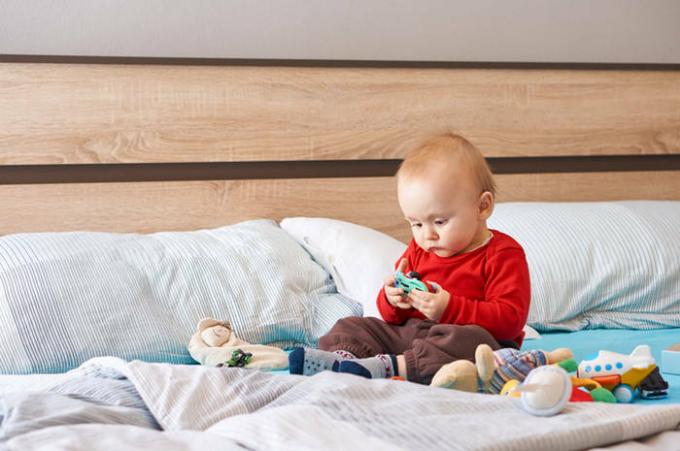
9th month
1. We feed the birds. Take some bird bread for a walk.
Show your child how to tear off and throw pieces of bread, tell them what the birds are called, comment on your actions and the actions of birds.
2. Trick with handkerchiefs. Tie a few different colored handkerchiefs or pieces of fabric together to create a long ribbon.Hide it in your bosom, leaving a small fragment outside. Tell your child what to pull on. The kid will be delighted when bright handkerchiefs appear one by one.

10th month
1. "Sounding" hide and seek. Hide a toy that can make sounds behind an obstacle. Have the toy beep periodically until the baby finds it. And when he finds it, let him make it "sound".
2. To encourage your child to crawl more, do it together. Make an obstacle course: chair, toys, basin.
Show which obstacles need to be "bypassed" and which you can climb or interact in some other way.

11th month
1. Teach colors with your child. Show that, for example, the child's ball and T-shirt are blue, the toy is yellow and the flower is yellow, let the child remember this correspondence, learns to find pairs.
2. Stringing on a rope. The kid himself can try to thread the rope through the holes of objects.It is important that they are large and that the game is supervised. Cars can be strung on a rope and rolled in single file.
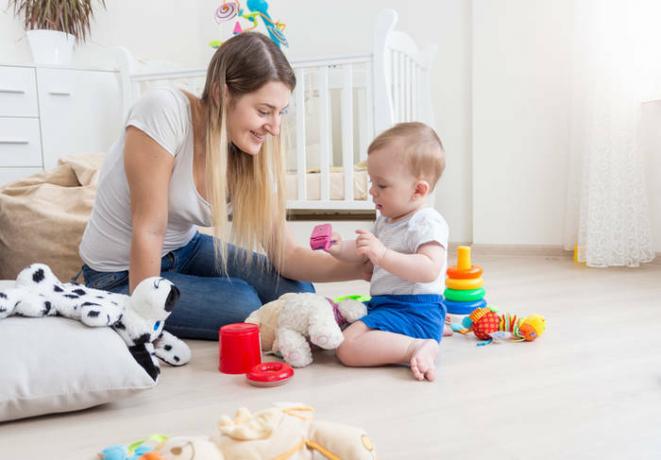
12th month
1. We roll the ball. Sit on the floor facing your baby. Show him how to roll the ball to each other, catch and roll back. You can also show how to throw the ball up and catch.
2. We throw the ball at the target. Place a small bowl / bowl, show your child how to throw a ball into it. When the ball hits the target, say "Bang!" Invite your baby to repeat.
3. We teach the child to classify: we group objects by colors and shapes; we spread from smallest to largest and vice versa, show the child a toy and offer to suggest to which group to assign it.
You will also be interested to read:
- Playpen for a child: pros and cons
- 5 little-known facts about infant brain development
- 5 ways to stimulate baby's humming



